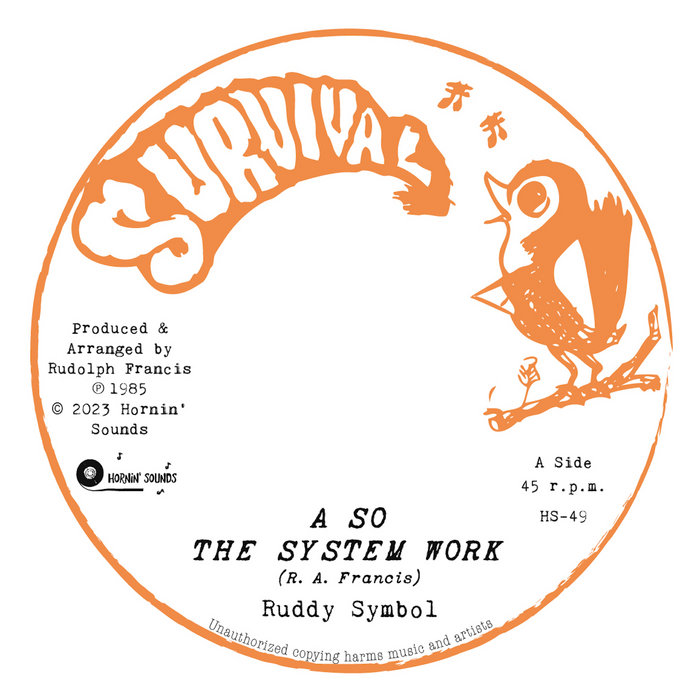
A So The System Work – Ruddy Symbol
this blog is GROOVY – check out great Soul, Funk, Jazz, Hip Hop, Bass, Breaks , Reggae, House n many more TUNES
Oh, the world of music! A magical realm where sounds dance, emotions stir, and symbols come alive. From ancient caves to today’s digital melodies, musicians have relied on various symbols to convey their wildest musical dreams. So buckle up your headphones and let’s groove through history and discover how these funky symbols shaped our soundscapes!
Long before the first note was ever played, early humans were making some serious noise—grunting out rhythms on bones and banging rocks together. But did you know that they likely had their own set of primitive symbols? That’s right! Archeologists found evidence in prehistoric caves showing not just art but rudimentary forms of notation too.
Imagine cavemen drumming away while tossing out doodles representing rhythm patterns! Talk about rockin’ it old school! 🤘
Fast forward a few thousand years to ancient civilizations such as the Greeks—where music began taking form with written notation. Greek philosophers like Pythagoras started mapping out melodies using mathematical concepts tied into sound frequencies. Their notation system used letters from their alphabet arranged musically; think “A-B-C-D” with more flair!
Fun Fact: Ever heard of Aristoxenus? This guy critiqued musicians way back when for playing in bad pitch! No auto-tune back then; they relied purely on ear skills!
As we waltzed into the Middle Ages (roughly 500-1400 AD), things got a bit jazzier—or should we say jazzy medieval? Musicians started developing neumes—those squiggly little marks above text indicating pitch changes without giving detailed notes. It was like an early draft version of sheet music!
Picture this: monks singing Gregorian chants trying desperately to figure out which neume means hit that high note or slide down low—all while avoiding any spontaneous laughter eruptions from fellow singers trying not to mess up.
There are accounts that some monks would occasionally break into unexpected rhythmic dances during long services because “the spirit moved them.” Can you imagine a holy rave?
The Renaissance era brought about major shifts (and more intricate glyphs) as composers began writing scores utilizing five lines—a game changer known as the staff system. These beauties allowed for better clarity in what notes sounded like everything else being tried before.
Composers such as Josquin des Prez made use of harmony dripping off pages—that’s when artistic creativity blasted open wide!
And here comes our fun fact again:
One notable composer, Giovanni Pierluigi da Palestrina, had so many musical pieces dedicated entirely to religious themes he probably invented modern-day elevator music for churches…except those heavenly choirs don’t need elevators!
Enter stage left—the Baroque period (1600-1750)! Enter amazing composers like Bach and Vivaldi who expanded composition styles further than ever–complete with dizzying ornamentations filling every corner imaginable.
Symbols became even denser during this time with dynamic signs indicating volume changes alongside expressive commands straight off bar lines! We’re talking “loud,” “soft,” or downright dramatic swells—with incredible ability via those evolving staves.
Let’s throw another quirky giggle your way:
Rumor has it that J.S. Bach frequently corrected his children’s homework—not necessarily because he wanted them proficient but rather so they wouldn’t end up embarrassing him at fancy soirées by playing wrong notes!
With hearts racing towards romance throughout late 18th century onward emerged passionate players crafting symphonic lovelies filled with intense emotion riding waves—all thanks again due precisely because new markings arrived onto scenes guiding orchestras correctly along flowing paths.
Suddenly composers could express feelings through intensified crescendos followed by sudden decrescendos shaping moods within heartstrings alike—you could say Beethoven woke everyone up–at least metaphorically speaking…
Did you hear about Chopin getting kicked out of parties when people insisted he play his own sad songs all night long? Apparently there are only so many times you can take someone sighing over heartbreak loudly until others get fed-up!!
Fast forward now folks—we’ve arrived at modernity—the vibrant explosion post-1900 where genres exploded everywhere bringing fresh symbolism galore across jazz riffs hip-hop beats concerts worldwide attracting droves upon droves eagerly awaiting those electrifying moments under blinking lights…
Today contemporary musicians might rely heavily upon technological tools laced deep within computers yet still recognize heavy influences crafted generations ago sending vibrations spiraling upwards echoing past lives across decades creating something truly timeless incredibly transcending cultural boundaries.
So next time when listening closely breathe easy knowing amidst nostalgic echoes followed suit beneath synaptic pyrotechnics each symbol tells stories bridging worlds sharing messages spinning tales making grooves endlessly lift spirits one beat after another never-ending journey passing along rich heritage left behind—music knows no bounds baby!!
So there ya go groovers—a whirlwind tour through the history packed tight with funky facts and killer tunes linking all together beautifully around great mystical symbols driving melody directly home adding colors shining brightly wherever ecstasy unfurls its wings dancing merrily forever onwards without hesitation breaking barriers ceaselessly unleashed eternally burgeoning inside hearts everywhere stay tuned my friends🌈😍✨

A So The System Work – Ruddy Symbol